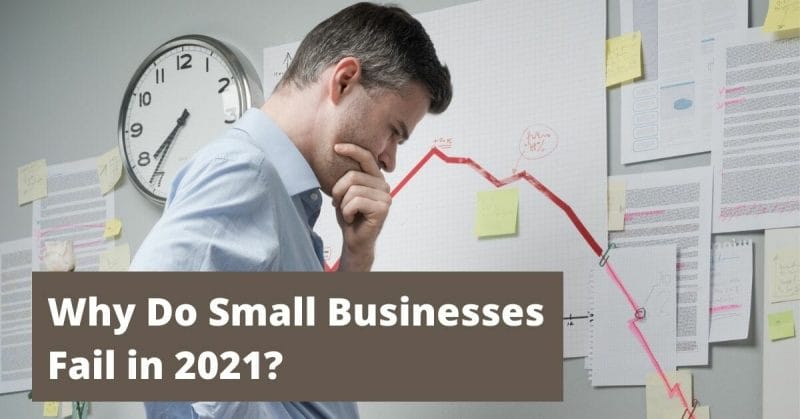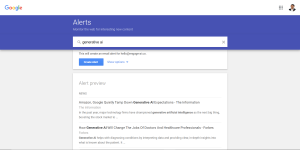It’s no secret that small businesses are feeling the strain. With increased competition and a struggling economy, small business owners are finding it more challenging to succeed.
As a business owner, it’s essential to know what you can do to prepare for the future. With that in mind, here are ten reasons why small businesses fail and how they can start preparing now for 2021 and beyond.
Table of Contents
Do Most Small Businesses Fail?
According to the U.S Small Business Administration, nearly half of small businesses fail within the first five years.
Understanding the root causes of past small businesses’ failure can help you avoid pitfalls, better prepare for the future and increase chances of success.
Why Do Small Businesses Fail?
Here are some of the biggest challenges that small businesses may face:
Wrong target market
Lack of focus is one reason why small businesses fail. A business that tries to do too many things will spread itself too thin, which could lead to a lack of profit and eventual failure.
But there’s another type of misfocus: targeting the wrong market.
For example, a Software-as-a-Service provider might think young, hip professionals are their target market, only to find out that the same people don’t want to spend money on a SaaS product with no mobile support.
Unclear or nonexistent value proposition
Failure to understand current customer behaviour
It’s essential to keep customers at the top of mind when running a business. When you stop thinking about why people are buying from you, it’s easy to lose track of what they need and why they’re choosing your company over someone else.
When assessing why small businesses fail, one must understand how customer behaviour is changing due to current events.
Lack of capital and funding
Starting any business requires funding, but the money needed to start a small business is significantly less than other types.
However, even with easier access to capital than larger corporations, many small businesses still lack funds or cash flow problems that prevent them from paying vendors and employees on time.
Challenges in finding the right employees
Finding and hiring the right people can be a struggle for many small businesses. Although they might have a solid team in place, many business owners experience high turnover rates because employees don’t feel appreciated or well-compensated.
One way to navigate these challenges is to partner with an Employer of Record (EOR). An EOR can enable your business to legally hire employees from anywhere in the world, helping you expand your talent pool and find qualified individuals who fit your company culture.
Competing against larger companies is hard enough if you don’t have the cash to pay your employees. Even worse, if employees are paid poorly, morale will suffer because your team won’t feel fulfilled.
Unstable cash flow management
Cash flow is the lifeblood of any business. Without a steady stream of cash, it’s nearly impossible to maintain day-to-day operations and cover expenses such as rent, utilities and staff wages.
A lack of understanding about how much money your company needs on an ongoing basis will lead to cash flow problems, which can be more challenging to resolve the longer they persist.
Poor working relationships with employees and customers
“People don’t care how much you know until they know how much you care.”
Employees and potential customers alike often judge a business’s value by its leaders’ level of empathy, not just the quality of products or services.
If employees and customers feel that your company doesn’t care about their needs and wellbeing, they’ll be quick to take their skills and business elsewhere.
Unsustainable growth
In the haste to expand, many small businesses take on too much debt or fail to create a feasible plan for future growth.
Before making any decisions about a new location or hiring a substantial number of employees, make sure your business is sustainably profitable. Otherwise, you could find yourself in a lot of trouble when sales unexpectedly fall flat.
Lack of marketing or lead generation
Every business needs a steady flow of new customers and clients to survive. For small businesses, attracting and converting potential buyers into actual paying customers is more complicated than it sounds.
A lack of marketing can make it difficult for your business to stand out from the pack. Equally, affordable advertising and marketing channels are scarce, if not saturated.
Poor online presence
Today’s consumers seek the best deal, fastest service, and easier ways to make their lives or business operations.
A lack of online marketing or poor visibility on search engines like Google makes it difficult for small businesses to stand out from competitors. If you fail to be found by people actively searching for your product or services, you’ll have difficulty getting leads.
What Makes a Small Business Successful?
What will drive the success or failure of future small businesses?
Apart from the basics, namely identifying the right target audience and unique value proposition, there are a few key areas that small business owners should focus on if they want to increase their chances of success.
LinkedIn marketing
The ability to generate leads and sales through LinkedIn is priceless, especially for B2B businesses, which have long sales cycles and limited advertising channels.
LinkedIn isn’t just a suitable platform for networking. It can also serve as a low-cost marketing channel when combined with the right tools and content marketing expertise.
With over 930 million users, LinkedIn is the best professional platform to build authority and trust. Like other social media platforms, your reach depends on whether your content gains the LinkedIn algorithm’s favour.
For example, LinkedIn polls are doing really well in 2021. One can easily get over ten thousand views by creating a poll on LinkedIn. However, LinkedIn is constantly updating its algorithm. Once it realises that polls are hitting a saturation point, LinkedIn will modify its algorithm to reduce spamming of polls.
A more stable and reliable factor is writing LinkedIn Posts (not Pulse articles) and receiving engagement from your first-degree connections. However, it’s harder to get likes and comments on any post on LinkedIn to reach a broader audience these days.
Top LinkedIn influencers rely on their extensive network and following to maintain their high reach. But what about those who are late to the game and still growing their LinkedIn profile?
Well, they also rely on their network. Albeit, this tactic often doesn’t pan out for the following reasons:
- It becomes evident to LinkedIn that it’s always the same people commenting on their posts. Subsequently, their post reach drops.
- It’s inconsistent. There are no rules or measures in place to make it mutually beneficial for both parties.
- Their network straight out doesn’t engage with their content. Commenting takes time; quality commenting takes time and effort.
Alternatively, LinkedIn users might rely on automated engagement, which is an entirely different (and risky) ball game.
So what have LinkedIn users, B2B business owners specifically, been doing to gain organic reach and higher visibility on the platform?
Website optimisation
It’s easy to put this off when you’re a business owner with a million things to remember and do. Nevertheless, it’s definitely a task you shouldn’t overlook if you want your target audience to find you online and see you as a credible business.
For starters, try checking off this list:
- Make sure to place your contact information in a visible location for your site visitors.
- Have at least quality blog posts on your website. A company site with a blog will always have more traffic because it’s populated with relevant keywords that users may search on the web.
- Keep your page-loading speed under 2 seconds. You can use Google’s PageSpeed Insights to see what’s slowing your site down.
- Update your website to list the services you offer. This is an easy way to cater to users who may search for a specific service on the web and find your page as a result.
- Make sure you have a custom domain name with TLS encryption to build trust and credibility.
- Optimise the pages on your site for mobile devices. Mobile traffic is exploding, so why ignore it?
- Make sure your pages are linked internally. This makes it easier for Google to find other pages on your website. On top of that, you get to keep your visitors on your website longer!
Integrate your marketing efforts
Make sure that people can easily find you on social media sites by having links to them on your website.
Incorporate a newsletter signup form on your site so you can send out messages about new products, sales and other offers. This will keep your audience in the loop and help you build a relationship with them that can pay off down the road.
Finally, you can repurpose your blog content.
For example, why not take your top five articles and publish them as eBooks? By doing so, you can use it as lead magnets for people to sign up to your email list. The more people on your email list means the more opportunities you have to market directly to that audience.
Create freebies that are valuable to your target audience
Creating useful templates, checklists, workbooks, and other assets that your audience is looking for can help you increase visibility on the web.
The key is to provide something of value (and it must be free!) when they subscribe to your email list. This will show Google that people are genuinely interested in what you have to offer–great news for your site’s SEO!
Adding a pop-up form on your site could be a great tactic. Just make sure that the offer is highly relevant to your audience and there’s a clear call to action on the pop-up form.
The Bottom Line
Visibility – all B2B business owners need it to generate leads and keep their businesses afloat.
Be smart about acquiring visibility online, and don’t be afraid to try new things.
It might take a few tries before you arrive at the right solution that works for you, but as long as you’re patient and persistent, nothing is stopping you from taking your company to the top.
Click here to find out more about how you can bring your company’s visibility to the next level and grow a successful business:








